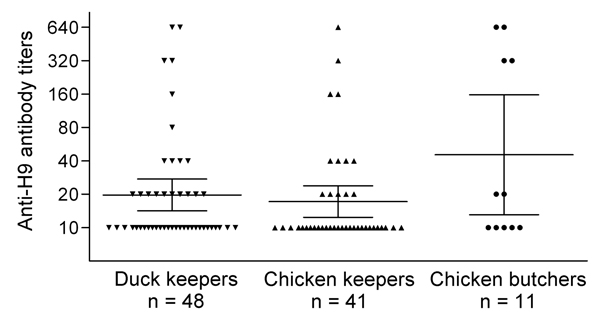Volume 19, Number 2—February 2013
Dispatch
Risk Perceptions for Avian Influenza Virus Infection among Poultry Workers, China
Figure

Figure. . Avian influenza A (H9N2) virus microneutralization titers of workers with occupational exposure to poultry, Beijing, China, 2009–2010. A total of 305 serum specimens were tested by microneutralization assay, serum samples were considered positive with titers >80, and titers <10 were not included in this figure. Geometric mean titers and 95% CIs of subtype H9N2 microneutralization titers in various groups are indicated by long and short horizontal lines.
1These authors contributed equally to this work.
Page created: January 22, 2013
Page updated: January 22, 2013
Page reviewed: January 22, 2013
The conclusions, findings, and opinions expressed by authors contributing to this journal do not necessarily reflect the official position of the U.S. Department of Health and Human Services, the Public Health Service, the Centers for Disease Control and Prevention, or the authors' affiliated institutions. Use of trade names is for identification only and does not imply endorsement by any of the groups named above.